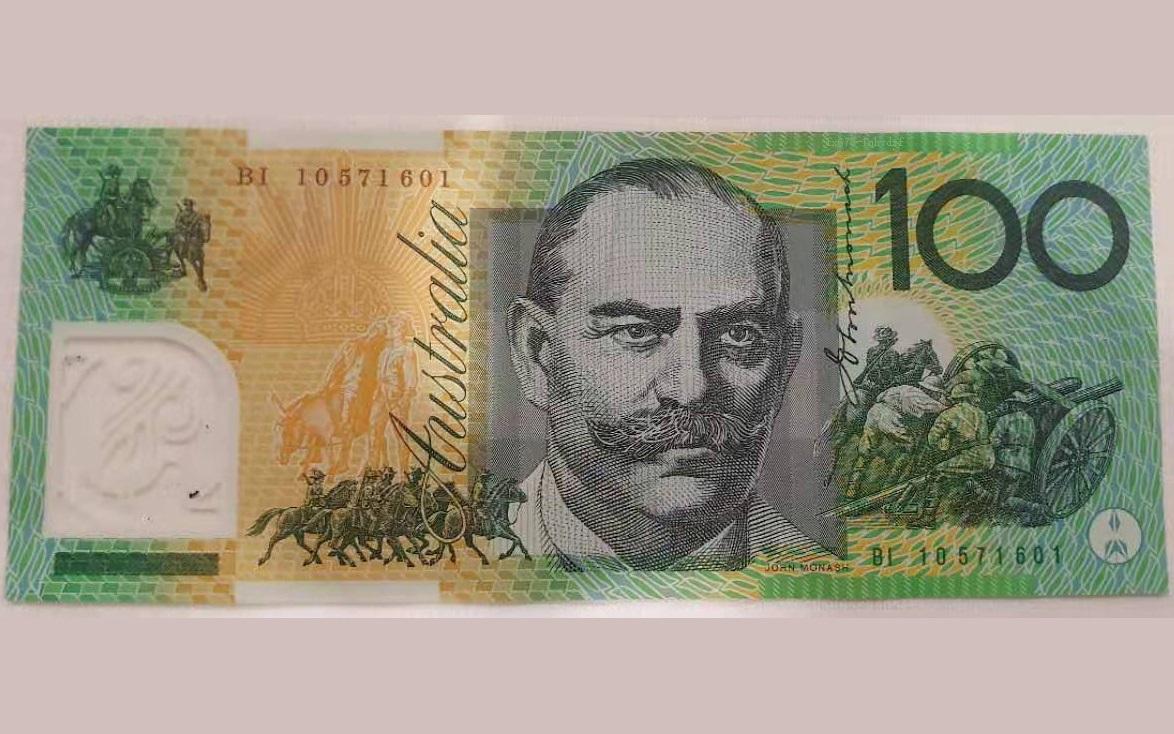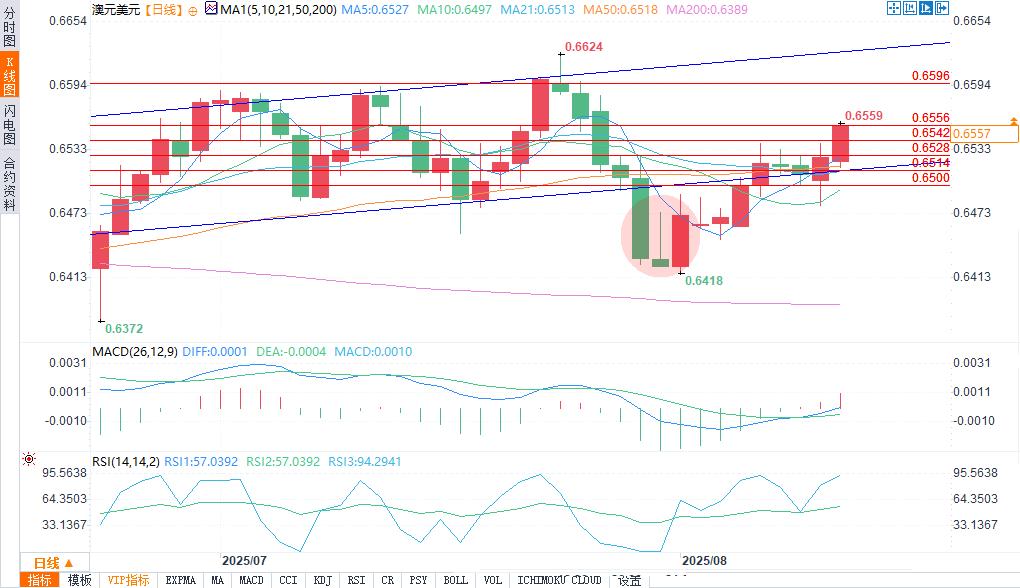Australian dollar extends gains after strong wage growth
2025-08-13 17:51:47

Australian wage growth remains stable at 3.4%
Australian wages grew 3.4% year-on-year in the second quarter, the same as in the first quarter and slightly above market expectations of 3.3%. The better-than-expected wage growth was driven by increases in both the public and private sectors.
While the labor market has been slowing, wage growth remains solid, and with inflation under control, the Reserve Bank of Australia is closely watching employment data.
On Tuesday, the Reserve Bank of Australia (RBA) cut interest rates as widely expected, lowering the official cash rate (OCR) to 3.6% from 3.85% in August. The central bank is cautious about further rate cuts, but further deterioration in the labor market could force the central bank to change its stance and cut rates again before the end of the year.
RBA Governor Andrew Bullock said current forecasts suggest the cash rate may need to be lowered to ensure price stability. However, he stressed the board's meeting-by-meeting approach and avoided making any commitments to rate changes amidst financial market volatility.
US headline CPI stable but core CPI rises
Downside for the AUD/USD pair is likely to be limited as the US dollar weakens following the release of mixed US Consumer Price Index (CPI) data.
Inflation in the US was 2.7% year-on-year in July, the same as in June. However, the core CPI unexpectedly rose to 3.1%, higher than the previous reading of 2.9% and the market expectation of 3.0%.
A sharp drop in gasoline prices dampened the headline CPI, but had no impact on the core CPI, which strips out food and energy prices. The surge in the core CPI was likely driven by U.S. tariffs, which are filtering through the economy and raising prices for U.S. imports.
The inflation report boosted market expectations for a September rate cut by the Federal Reserve. Market expectations for a rate cut have risen to 96% from 84% before Tuesday's inflation report.
Tariff factors
The Australian dollar also found support after the Trump administration announced it would delay the implementation of comprehensive tariffs on China for another 90 days.
China also decided to suspend additional tariffs on US goods during the same period, a decision made after Trump extended his tariff truce. It is worth noting that any changes in the Chinese economy could affect the Australian dollar, as China and Australia are close trading partners.
U.S. Treasury Secretary Scott Bessent said earlier on Wednesday that Chinese and American trade officials will meet again in the next two to three months to discuss the future of the two countries' economic relationship. "The United States wants to see continued progress on the influx of fentanyl, which could take several months or even a year, before considering reducing tariffs," Bessent said.
Technical Analysis

(AUD/USD daily chart source: Yihuitong)
AUD/USD has broken through the resistance levels of 0.6528 and 0.6542 and is currently testing 0.6556. The upper resistance level is 0.6596. The next support levels are 0.6514 and 0.6500.
OCBC FX analysts Frances Cheung and Christopher Wong note that the AUD/USD pair is currently trading around 0.6549. The prevailing trend remains to buy pullbacks. Bearish momentum on the daily chart is fading, with the RSI rising. Upside resistance lies around 0.6550 and 0.66. Downside support lies around 0.65 and 0.6430. The labor market report will be released on Thursday.
At 17:40 Beijing time, AUD/USD was at 0.6558/59, up 0.46%.
- Risk Warning and Disclaimer
- The market involves risk, and trading may not be suitable for all investors. This article is for reference only and does not constitute personal investment advice, nor does it take into account certain users’ specific investment objectives, financial situation, or other needs. Any investment decisions made based on this information are at your own risk.





















